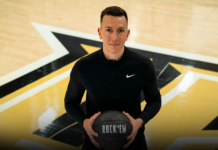By Shannon Scheidell
Four journalists joined professor Richard Brunson at UCF earlier this week to discuss the media, legal and cultural phenomenon surrounding the George Zimmerman trial.
The shooting of Trayvon Martin took place on Feb. 26, 2012, the state met March 6, and Zimmerman was acquitted July 13, 2013. The question lingering on the lips of Americans is, “Why did it take so long to determine whether he was guilty or innocent?”
Rene Stutzman from the Orlando Sentinel followed the trial closely, being the eyes and ears of the news media; she attended court each time Zimmerman appeared on the stand to make sure the public received the most accurate information as soon as it was available.
This trial was unlike any trial before. The Casey Anthony case, though controversial, did not receive the amount of hype online or by word of mouth. This was a national story which pitted the state against the people, race was taken into account and the very definition of “justice” was up for debate for an entire year while the jury deliberated. Only a select few are able to say they know what happened during the altercation between the 17-year-old Martin and Zimmerman.
“We were fighting against a false perception,” Stutzman said. “People’s opinions are so divorced from what really happened. It puzzles me that there is still so much anger and rage about something that has already been solved in federal court.”
Her colleague, Jeff Weiner, reported on the case alongside her from the Sentinel office.
“This was as much a criminal story as it was a political one,” Weiner said. “This is a hyper-critical period where people criticize the media.”
UCF professor and NY Times correspondent, Lance Speere said, “People used to go the bar and speak about their feelings, now they can do it on Twitter.”
Social media had a role in this case, as jurors were themselves investigated via Twitter and Facebook to make sure they didn’t have any hidden biases. There were two alleged “stealth jurors” who were believed to harbor ulterior motives, working to exact their own form of justice by subverting the system from the inside.
Throughout the two-hour discussion panel, students were hammering away at their own personal devices. In between the information session and the Q&A, a faint rustling could be heard, almost as if leaves were being crushed underfoot, as students typed furiously on their laptops and tablets.
Though we’re closing the gap between the future of technology and the present state of the nation today, Kathi Belich said it’s hard to believe that we haven’t overcome the issue of race in the U.S.
“Honestly, I thought after we voted Obama in, race wouldn’t be an issue anymore. We’ve come a long way, but in certain respects, we haven’t come far enough,” Belich said.
The panel was available to the public, but limited seating was available to those who arrived late, as students from the Nicholson School quickly filled the room. Brunson presented a slideshow with clips briefly introducing each journalist’s accomplishments in the field before the conversation heated up during the Q&A. Two students started verbally attacking Bill Sheaffer, legal analyst for WFTV, saying that he got his facts wrong. Another student asked him why he felt the Zimmerman case was sensationalized and Sheaffer responded with an analysis on the word “sensational.”
“Sensationalizing is hyperbolizing the facts, we presented the facts,” he said.
“This wasn’t a ‘Stand Your Ground,’ case,” Sheaffer said. “This wasn’t about a man seeking justice for shooting another man in self-defense. This isn’t the first time this has happened, but the verdict has been reached, prosecution lost the case and they lost it early on,” he said.
Channel 9 reporter, Kathi Belich, agreed that the Zimmerman trial was an example of poor judgment by the media, encouraged by lazy employees of the Sanford police department.
“The state confused the jury,” Belich said. “They changed the way they did things, they hid evidence, and they engaged in unethical conduct, all eyes were on them.”
During the panel, students saw another side to the journalists they usually saw on TV or read about in the paper. Some witnessed the pressure placed on their shoulders during the long hours they put into finding the truth about that February night in 2012.
“I think the news media did the best with what they had at the time,” Speere said.






